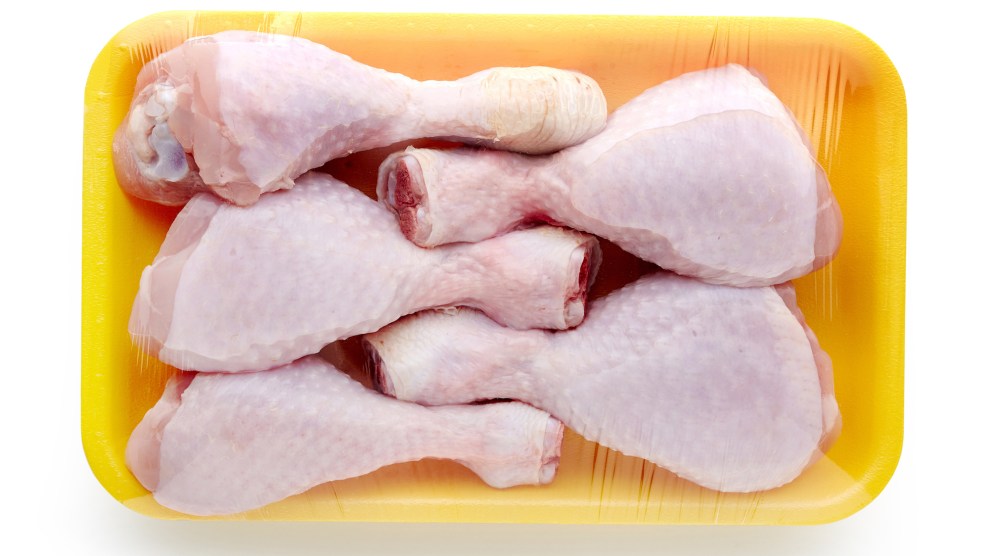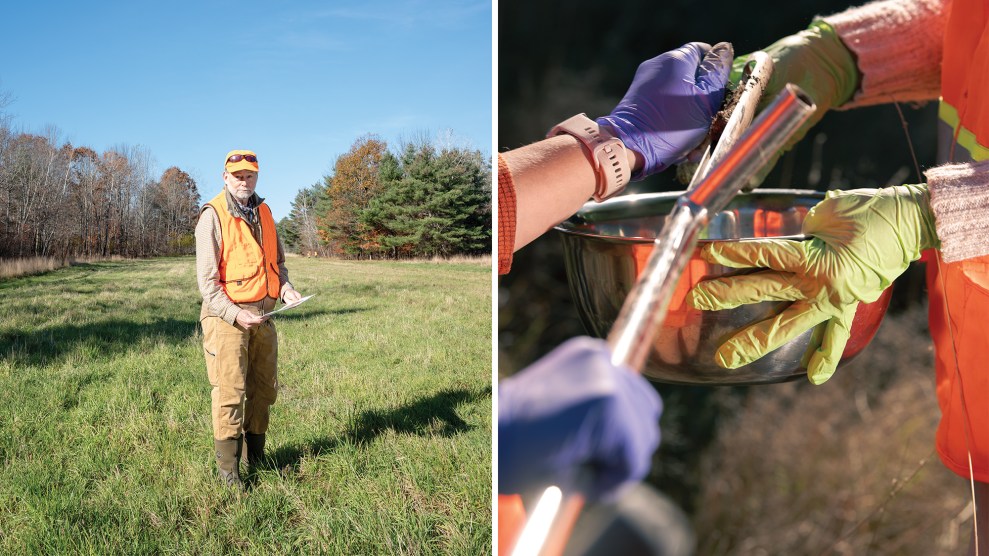It takes around 250,000 workers to break down chicken carcasses into the wings, drumsticks, thighs, and breasts that make up America’s favorite meat. These workers don’t have many friends in high places—the job is tough (birds whiz down the line at rates as high as two per second) and dangerous, and the pay stinks (about $11 per hour). Given these conditions, it’s not surprising that the industry attracts some of society’s most vulnerable people: immigrants, refugees, and even prisoners.
And yet, US poultry workers just got a surprise break from an unlikely quarter: the Trump administration. Last September, the National Chicken Council petitioned the US Department of Agriculture to allow poultry plants to operate their lines as fast as they want, as opposed to the current maximum of 140 birds per minute. Given the Trump team’s deregulatory zeal, its open hostility to the immigrants and refugees who tend to work those lines, and the fact that USDA secretary Sonny Perdue hails from the poultry-intensive state of Georgia, many observers thought the industry’s wish would be granted. Also, less than two weeks ago, the USDA announced a new inspection system for pork slaughterhouses that will likely result in a speed-up of the kill line for that industry.
But in a Tuesday missive, the USDA flatly rejected the National Chicken Council’s petition. The reason involves food safety: The agency declared that the NCC had failed to provide data showing that “inspectors can conduct an effective carcass-by-carcass inspection” at lines speeds greater than the current minimum.
The agency did place a subtle gift to the industry within the larger defeat. Currently, under an old pilot program, 20 chicken slaughterhouses are allowed to run lines as fast as 175 birds per minute—a 25 percent jump over the broad limit of 140 birds per minute, and the source of much outrage among worker advocacy groups. In its letter to the NCC, the agency announced it would expand the pilot program to include a “limited number” of additional plants to operate at the 175 birds per minute maximum.
Even so, worker-advocacy groups see the USDA’s decision as a net victory. “The USDA’s decision to reject the poultry industry’s request to remove all line speed limits is an important victory for poultry workers in this current climate of deregulation and corporate welfare,” Sarah Rich, staff attorney at the Southern Poverty Law Center, said in an emailed statement.
Minor Sinclair, director of Oxfam’s US Domestic Program, added that “while we welcome this victory for the workers across the country, we also sound a note of caution about the potential for individual plants to ask to raise the speed in their operations…Workers report that they’re already working at breakneck speed–slicing and cutting 40 or 50 birds per minute. They’re exhausted and hurting, and they worry about the problems they see in the food supply.”













